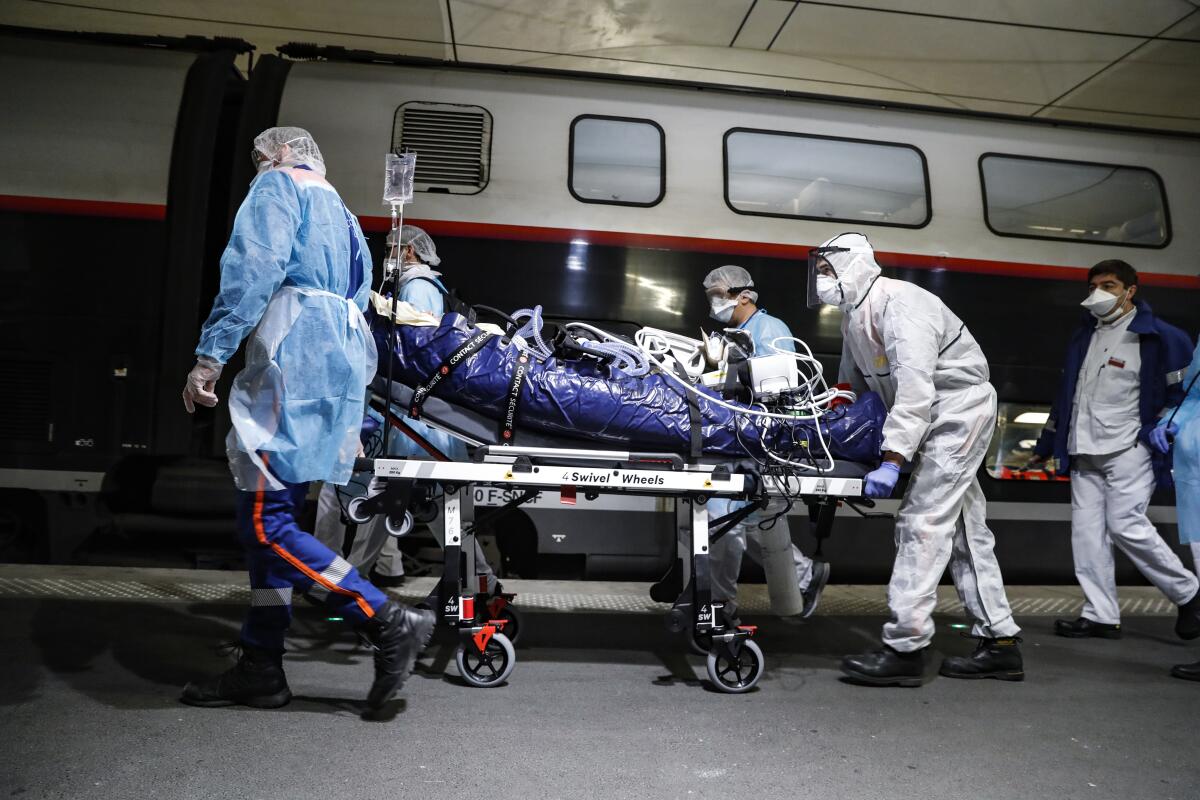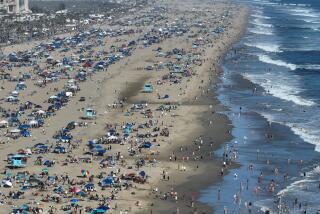Editorial: This could be the first worst week of many worst weeks to come. Prepare yourselves

The U.S. death toll from COVID-19 passed the 10,000 mark on Monday, just slightly more than two months from the day the first case was confirmed in the state of Washington. As bad as that is, things are going to get worse.
That’s the gloomy message coming from federal, state and local authorities, who’ve warned that this will be the worst week yet for the nation during the pandemic. With dramatic increases in deaths from COVID-19 likely in such hot spots as New York, Louisiana and Detroit, U.S. Surgeon Gen. Jerome Adams told Fox News Sunday that “this is going to be the hardest and the saddest week of most Americans’ lives, quite frankly.”
California too is bracing for a tough week. The state now has nearly 16,000 identified cases, more than 6,300 of which are in Los Angeles County. And the numbers are still rising. Hospitalizations for COVID-19 cases jumped 10% overnight, Gov. Gavin Newsom reported Monday; the L.A. County Department of Public Health on Sunday reported 15 deaths in the county since the day before.
There’s no reason to doubt the bleak outlook. In the past two months, every week has been worse than the one that came before. But don’t misinterpret the warnings coming from government. New cases and deaths are not expected to fall off after this one intensely bad week. Next week will likely be worse still. And the week after that? More sickness and more death. Newsom said Monday that he didn’t expect the pandemic to peak in California until May.
How long it will go on and how many Americans will die before the pandemic is played out is an open question. Will it be the 100,000 to 240,000 people that President Trump’s coronavirus task force suggested last week, based on a selective reading of epidemiological models? Will it be 49,000 to 136,000 deaths by Aug. 1, as modeling by the University of Washington’s Institute for Health Metrics and Evaluation suggests? Or something closer to the 1.2 million death scenario painted by the Imperial College London’s models?
We don’t know. We can’t know. While statistical models of the pandemic’s trajectory can be useful to shock complacent elected officials out of denial, they cannot tell the future, only suggest possible outcomes based on an educated extrapolation from known data. And in the case of SARS-CoV-2, which was identified only in December, there aren’t enough data.
That’s why the wisest course now is to stick with the social distancing strategies that are currently in place, despite the damage they’re inflicting on our livelihoods and the economy. Indeed, officials in places such as Singapore and South Korea who thought they successfully flattened the pandemic’s curve with quick action are now seeing a resurgence in cases from incoming travelers. The safest bet is that this week will be the worst, followed by an unknown number of even worse weeks.
The justices give police the OK to stop drivers with nothing more than the barest fig leaf of a reason: that the car owner’s license has been revoked.
More to Read
A cure for the common opinion
Get thought-provoking perspectives with our weekly newsletter.
You may occasionally receive promotional content from the Los Angeles Times.






